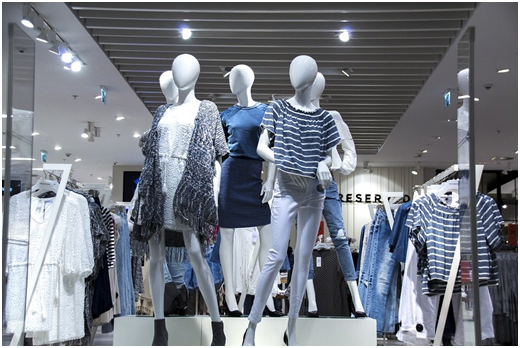
Charles R. Goulding and Preeti Sulibhavi consider whether a recent move in retail might be helped even further by incorporating advanced technologies like 3D printing.
To the surprise of both the real estate and fashion retail industries, Simon Property Group, the large top tier mall owner, has quickly purchased interests in five major retail chains. Those chains include:
- Brooks Brothers
- Nautica
- Aéropostale
- Forever 21
- Lucky Brand
With the acquisitions, Simon is essentially becoming its own tenant. To all the naysayers, Simon is keeping up appearances by retaining troubled tenants in its malls to attract foot traffic. However, these investments are offered at a time when the entire fashion supply chain is digitizing and many competitors of these chains are liquidating. With these new fashion acquisitions, Simon will be able to evaluate best practices and arguably improve the performance of each retailer.
There should be an opportunity to pare-down poor performing locations outside the higher traffic mall locations. There are approximately 1,100 mall operations in the U.S. and over 500 of the lower-tier malls are predicted to go out of business. The real opportunity may be in optimizing the online retail and brick-and-mortar segments, as Amazon has done with Whole Foods and its own expanding line of Amazon brand stores.
In fact, David Simon, the Simon CEO, has said that the critics of his purchases “are probably the same people who told Amazon to stay in the book business.” Simon is also reportedly in discussions with Amazon regarding lending some commercial space for Amazon operations.
The Authentic Brands Partnership owns over 1,000 stores and has a partnership with Simon, called Sparc Group LLC. Authentic Brands partnered with Simon to purchase Aeropostale in 2016 and Forever 21 in February 2020. E-commerce revenue at Sparc has grown to about $1 billion annually and Authentic Brands’ CEO, Jamie Salter, likes e-commerce/brick-and-mortar hybrid strategies.
Technology Opportunities
In these authors’ opinions, the real opportunity for Simon to create value with their store chain purchases may be in technology. Note: there is no indication from Simon they intend to do this.
The five companies purchased had sustained financial issues that would have kept them from making the necessary investments in today’s fashion supply chain technology. Some of those technologies include warehouse management systems (WMS), cashier-less point-of-sales systems, ultraviolet light, robot cleaning systems, and 3D printing, of course.
Major apparel industry retailers that have used 3D printing include Nike and adidas. Developing 3D printing-centered systems enables precise size measurement by scan, custom garment creation, and fitting and material optimization with Gerber machines. Simon bought these businesses for low purchase prices so it should have the capital, and cash flow, to make some of the needed technology investments.
One technological improvement that might make Simon’s designer labels more efficient and profitable includes what people are referring to as “fashion design software.” This is defined as online fashion design software that helps customers create unlimited designs quickly and easily. They can visualize these creations in 3D and get custom-fitted patterns in a matter of seconds. One such company offering this technology is Tailornova. Branding itself as the world’s smartest 3D fashion design software, it brings high fashion to the high masses, by eliminating the time-consuming process related to traditional design and pattern-making.
Going a step further, Virtuality Fashion is a fashion application that brings customers’ fashion ideas to life. The app seamlessly integrates 3D prototyping into the product development process, without the expensive clothing design software. There are also sites devoted to helping customers understand how to use this advanced 3D printing software and technology, like Danit Peleg, the leading 3D printing designer. Peleg offers virtual workshops and tutorials that teach 3D printing for fashion in simple and user-friendly sessions. Up-and-coming designer Susana Marques also offers virtual 3D printing fashion workshops through her SARQUE business.
Simon can utilize such technologies in improving its newly-acquired fashion brands’ business strategies and operations. Improvements and developments in 3D software and other 3D printing technologies are eligible for federal tax benefits.
The Research and Development Tax Credit
Whether it’s used for creating and testing prototypes or for final production, 3D printing is a great indicator that R&D Credit eligible activities are taking place. Companies implementing this technology at any point should consider taking advantage of R&D Tax Credits.
Enacted in 1981, the now permanent Federal Research and Development (R&D) Tax Credit allows a credit that typically ranges from 4%-7% of eligible spending for new and improved products and processes. Qualified research must meet the following four criteria:
- Must be technological in nature
- Must be a component of the taxpayer’s business
- Must represent R&D in the experimental sense and generally includes all such costs related to the development or improvement of a product or process
- Must eliminate uncertainty through a process of experimentation that considers one or more alternatives
Eligible costs include US employee wages, cost of supplies consumed in the R&D process, cost of pre-production testing, US contract research expenses, and certain costs associated with developing a patent.
On December 18, 2015, President Obama signed the PATH Act, making the R&D Tax Credit permanent. Beginning in 2016, the R&D credit has been used to offset Alternative Minimum Tax (AMT) for companies with revenue below $50MM and, startup businesses can obtain up to $250,000 per year in payroll tax cash rebates.
Trying Not To Be “Clothes-Minded”
While Simon has been buying-up leading fashion designer labels and retail mall spaces, it is not a guarantee that this strategy will be successful. However, by leveraging 3D printing technology, Simon and the fashion industry can expand the value of their acquisitions as well as learn from what went wrong with these companies to begin with to avoid an unfortunate recurrence.





